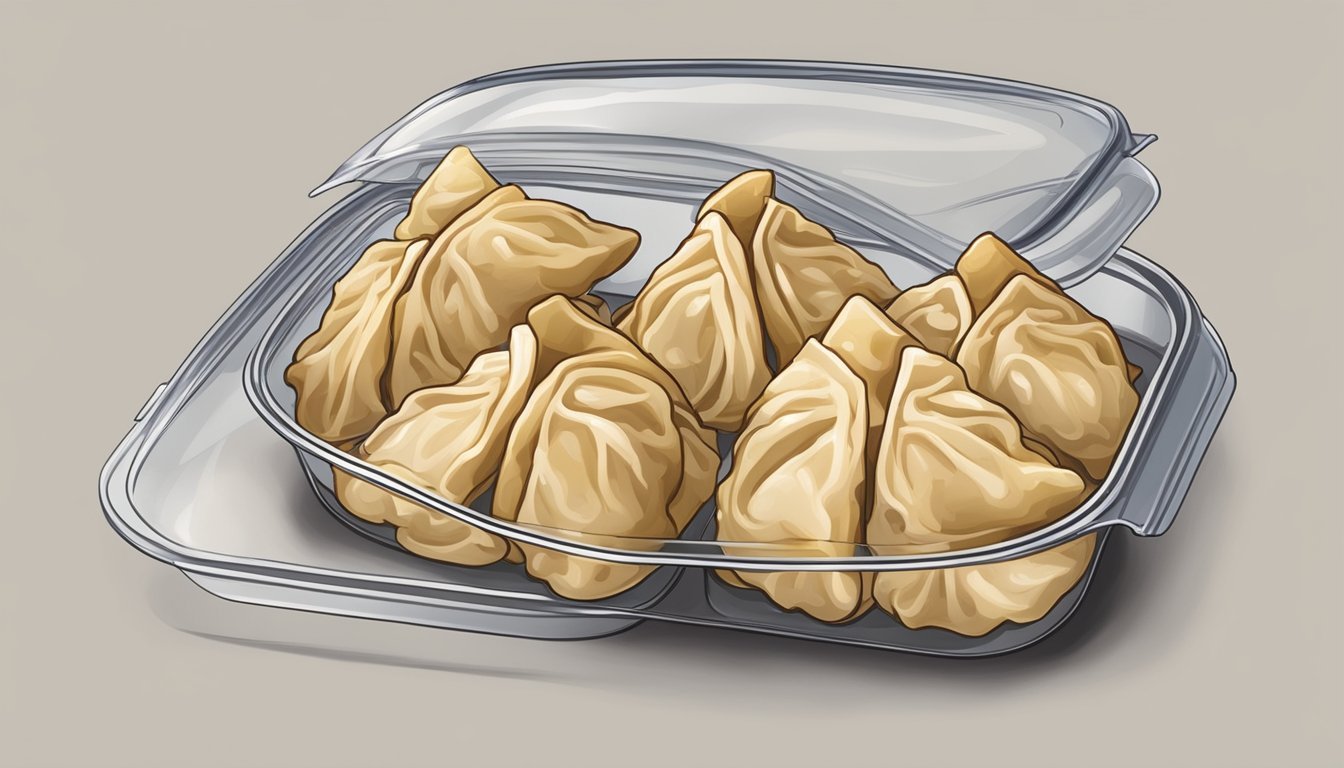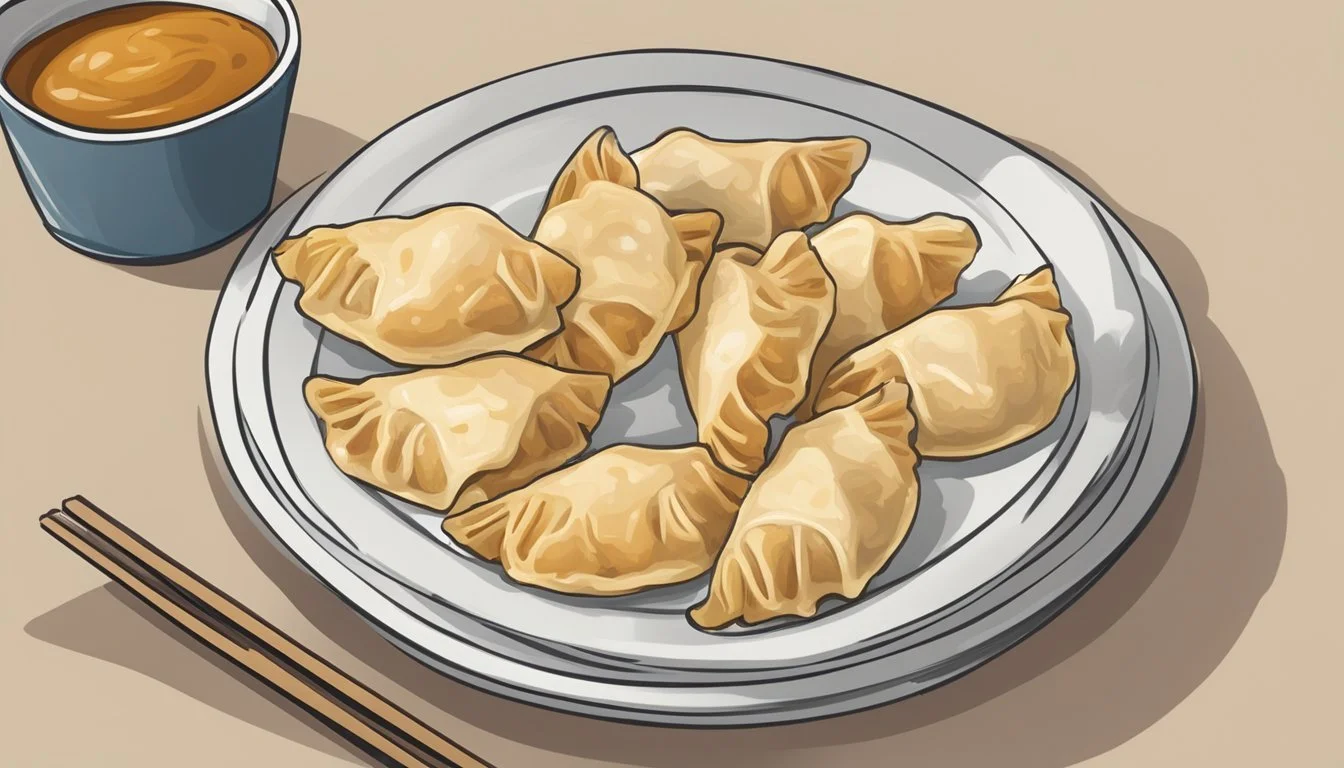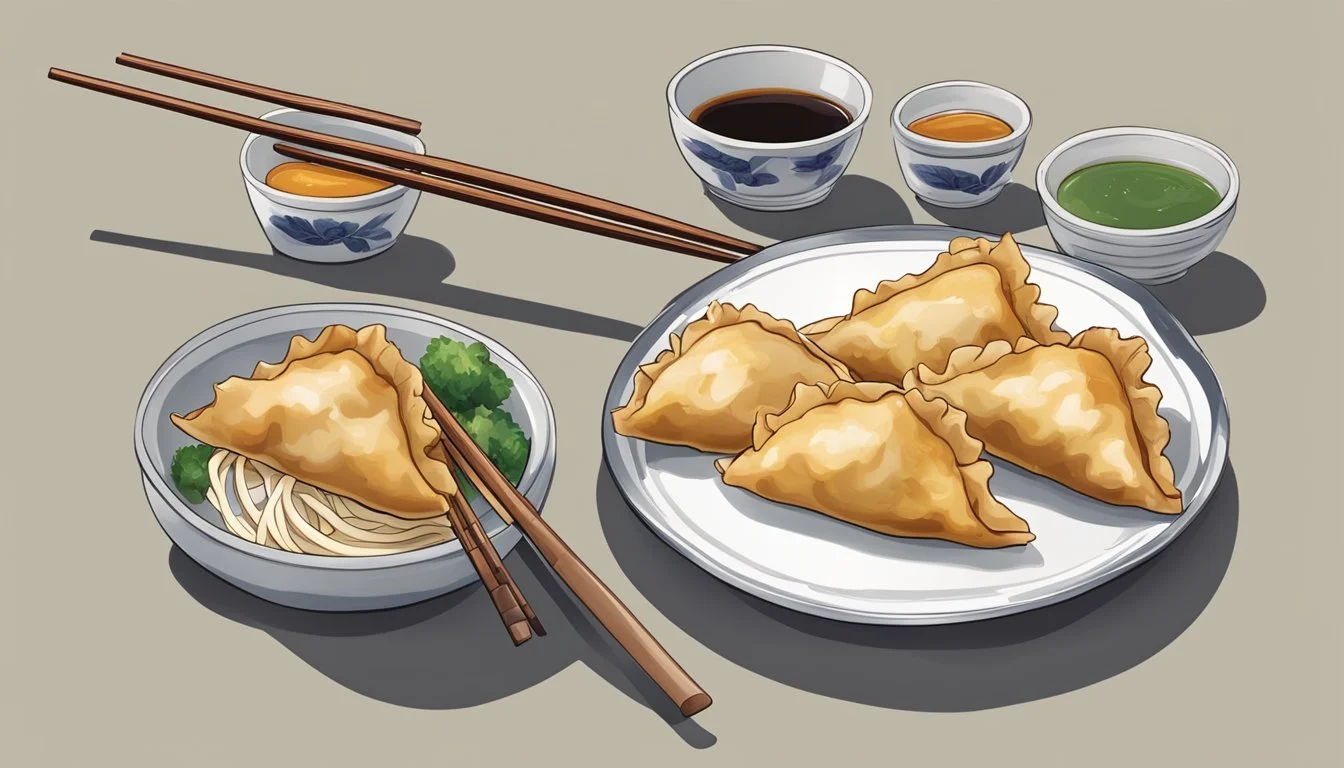How Long Do Chicken Potstickers Last?
Storage Tips and Safety Guidelines
Chicken potstickers are a versatile and beloved dish that can be enjoyed as an appetizer, snack, or even a main course. Storing them properly is key to maintaining their flavor and texture. When stored in an airtight container in the refrigerator, chicken potstickers can last for up to three days.
For those who prefer to freeze their potstickers for later use, it's reassuring to know that they can remain in the freezer for up to three months. Ensuring that the potstickers are stored in an airtight container or freezer bag, and labeled with the freezing date, helps preserve their quality.
Understanding the best practices for storing chicken potstickers not only extends their shelf life but also ensures that each bite remains delicious and satisfying. This article will explore the different methods for storing and reheating potstickers, ensuring that you can always enjoy them at their best.
Understanding Chicken Potstickers
Chicken potstickers are a delightful dish that combines various ingredients to create a delicious and savory meal. The following sections break down their components and the role each ingredient plays in maintaining freshness.
Components of Chicken Potstickers
Chicken potstickers consist of two main parts: the dough and the filling. The dough is typically made from flour and water, forming a thin and soft wrapper. The filling generally includes ground chicken, chopped vegetables such as cabbage and green onion, and aromatic ingredients like ginger and garlic.
The dough is rolled into thin sheets and cut into circles, which are then filled with the chicken mixture. After filling, the edges are folded and sealed to create a crescent shape. These potstickers are then either steamed, fried, or a combination of both to achieve a crispy yet tender texture.
The Role of Ingredients in Freshness
The ground chicken is the primary protein source and should be fresh to ensure optimal taste and texture. Items like cabbage and green onions add crunch and flavor but can degrade in quality over time, affecting the overall freshness of the potstickers.
Ginger and garlic are crucial for adding depth to the flavor profile. However, these ingredients can lose potency if stored improperly. Ensuring they are fresh will significantly impact the overall taste of the dish.
Properly preparing and storing the filling and dough components helps extend the freshness of chicken potstickers. They can be frozen and stored for future use, but refrigeration is more suitable for short-term storage. Dipping sauces should also be kept fresh to complement the potstickers effectively.
Safe Preparation and Cooking Techniques
Ensuring safety in preparing and cooking chicken potstickers involves careful attention to handling the filling and properly cooking the dumplings to avoid foodborne illnesses and achieve the best taste and texture.
Preparing the Filling and Wrapping
To create a safe and delicious potsticker filling, it is crucial to start with fresh, high-quality ingredients. Mix minced chicken with chopped vegetables such as carrots, green cabbage, and green onions. Season the mixture with soy sauce, hoisin sauce, sesame oil, and minced garlic.
Before wrapping, place a teaspoon of the filling in the center of the dumpling wrappers or potsticker wrappers. Moisten the edges with water, fold the wrapper, and press firmly to seal. Pleating the edges can help ensure the potstickers stay closed during cooking.
Proper Cooking Methods
Begin by heating vegetable oil in a skillet over medium-high heat. Arrange the potstickers in a single layer, ensuring they do not touch or overlap. Cook for 2-3 minutes until the bottoms turn a crisp, golden brown.
Next, add water to the skillet—about half a cup for a dozen potstickers—and quickly cover it with a lid to steam. Lower the heat to medium-low and continue cooking for 5-6 minutes.
Alternatively, potstickers can be pan-fried by starting the same way—heating oil and browning the bottoms. Once browned, add a small amount of water, cover, and steam for 5 minutes.
These methods ensure the chicken is fully cooked while retaining a crisp exterior, providing a safe and flavorful dish.
Storing Chicken Potstickers
Proper storage of chicken potstickers is essential to maintain their quality and safety. Potstickers can be stored in either the refrigerator or freezer, depending on when you plan to consume them.
Refrigerator Storage Guidelines
When storing chicken potstickers in the refrigerator, place them in an airtight container or a resealable plastic bag to avoid moisture loss. Leftover potstickers should be stored within two hours of cooking to prevent bacterial growth. They can be kept in the refrigerator for up to 3-4 days.
If you have made a large batch ahead of time, separate the potstickers into smaller, single-portion containers. This practice minimizes the opening and closing of the container, keeping them fresh for a longer period. Additionally, ensure the refrigerator remains at or below 40°F (4°C) to maintain optimal storage conditions.
Freezer Storage Tips
Freezing is ideal for storing chicken potstickers if you don’t plan on eating them immediately. First, lay the fresh potstickers on a baking sheet lined with parchment paper in a single layer. This prevents them from sticking together. Place the baking sheet in the freezer for a few hours until the potstickers are solid.
Once they are frozen, transfer the potstickers into an airtight container or a freezer-safe bag, and label it with the date. Frozen chicken potstickers can last up to three months in the freezer. To ensure quality, keep the freezer at 0°F (-18°C) or lower.
When ready to cook, there is no need to thaw frozen potstickers. They can go directly from the freezer to the pan, steamer, or air fryer, ensuring a tasty and convenient meal anytime.
Signs of Spoilage
When evaluating chicken potstickers for spoilage, use your senses to identify key indicators of quality loss.
Smell: One of the most obvious signs is an off smell. Spoiled chicken potstickers might emit a sour, ammonia-like odor. If the smell is unpleasant or unexpected, discard them.
Texture: Pay attention to the texture. Fresh potstickers should have a firm and slightly chewy dough. If they feel slimy, sticky, or unusually soft, this is a clear sign of spoilage.
Discoloration: Examine the potstickers for any discoloration. The dough and chicken filling should have a consistent color. If you see gray or greenish hues, it's best to err on the side of caution and dispose of them.
Mould: The presence of visible mould is a definitive sign the potstickers are no longer safe to eat. Look for any unusual spots or fuzzy patches on the surface.
Taste: If the potstickers pass the smell, texture, and visual checks, but still taste off or sour, it’s a sign they have gone bad. Trust your taste buds.
When in doubt about any of these signs, it is better to prevent consumption.
Reheating and Serving Leftover Potstickers
Properly reheating potstickers ensures they retain their texture and flavor. Serving them with the right accompaniments enhances the meal experience.
Reheating for Optimal Taste and Safety
To reheat potstickers while maintaining their quality, select methods that keep them crispy on the bottom and tender on top. Pan frying is effective; use medium-high heat with a small amount of oil. Place potstickers bottom-side down, cook for 1-2 minutes until crisp. Reduce heat, add 2-3 tablespoons of water, and cover for an additional 4-6 minutes.
Air frying provides a quicker alternative. Set the fryer to 300°F (150°C). Place potstickers in a single layer, heat for 2-4 minutes, checking halfway to prevent drying out.
For oven reheating, preheat to 400°F (200°C). Spread potstickers on a baking sheet lined with parchment paper, rotate halfway, and heat for 10-12 minutes.
Serving Suggestions and Pairings
Serve reheated potstickers immediately to enjoy their best texture. Pair with dipping sauces such as soy sauce mixed with a dash of vinegar for a tangy contrast. Sprinkle chopped scallions for a fresh touch.
Complement potstickers with sides like steamed vegetables, rice, or a light salad to balance the meal. For an enhanced dining experience, consider offering soy dipping sauce with added chili oil for a spicy kick or sesame oil for a nutty flavor.
Accompaniments should be simple yet flavorful, ensuring the potstickers remain the focus of the dish.
Nutritional Information
Chicken potstickers are a savory snack enjoyed by many. They contain a mix of nutrients that cater to different dietary needs.
Each serving of chicken potstickers may vary in calorie count.
For example, one potsticker can have around 40-56 calories. When consuming a typical serving size of three pieces, it adds up to about 120-168 calories.
Macronutrients
Protein:
Chicken potstickers contain about 7 grams of protein per serving of three pieces. This makes them a decent protein source, especially for a snack.
Carbohydrates:
Carbohydrate content in one serving is approximately 23 grams. The carbs come mainly from the dumpling wrapper and any added vegetables.
Fat:
Fat content can range from 2.4 grams per potsticker to 11 grams for a serving of three pieces. This includes polyunsaturated fats, monounsaturated fats, and a small amount of saturated fats.
Fat Breakdown (per-serving)
Saturated Fat: 2.5 grams
Polyunsaturated Fat: 1.1 grams
Monounsaturated Fat: 0.7 grams
Trans Fat: 0 grams
Quick Facts List
Calories: 40-56 per piece
Protein: 7 grams (per three pieces)
Carbohydrates: 23 grams (per three pieces)
Total Fat: 2.4-11 grams (varies per serving size)
This nutritional breakdown helps in understanding the dietary value of incorporating chicken potstickers into your meal plan.
Additional Tips and Tricks
Attention to detail in preparing and storing chicken potstickers can greatly improve their quality and longevity. Here are some practical tips for creating a perfect seal and making potstickers in batches.
Creating the Perfect Seal
Ensuring a proper seal on your potstickers is essential to prevent filling leakage during cooking.
To achieve this, place a small amount of filling in the center of the dumpling wrapper. Moisten the edges of the wrapper lightly with water using your finger or a small brush. Fold the wrapper in half and press firmly around the edges to seal. Make sure no air is trapped inside the dumpling.
For an added touch, crimp the edges by making small pleats. This not only ensures a better seal but also gives the potstickers an appealing aesthetic. Practice and patience are key to mastering the perfect seal.
Making Potstickers in Batches
When preparing potstickers for future use, cooking in batches can save time and effort.
Lay the assembled potstickers on a baking sheet lined with parchment paper, ensuring they do not touch each other to prevent sticking. Freeze them on the sheet until solid, which usually takes about an hour. Once frozen, transfer the potstickers to a freezer bag or airtight container for longer storage.
When ready to cook, there's no need to thaw the potstickers. Start by following the usual cooking method — pan-frying the bottoms and then steaming them until fully cooked. This method retains the flavor and texture of freshly made potstickers.









